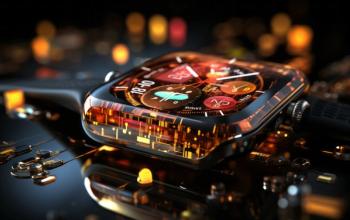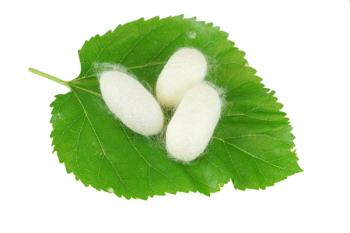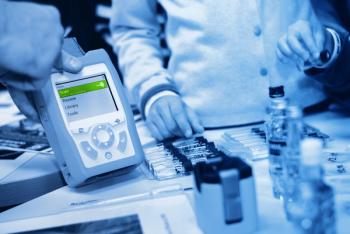
Portable Raman Spectroscopy for Identifying Bacterial Growth Media
Handheld Raman spectrometers have been used to identify a variety of chemical materials, including toxic industrial chemicals, chemical warfare agents, explosives, narcotics, pharmaceutical compounds, and plastics. Researcher Mathew Lyman of the Chemical, Biological, Radiological Nuclear and Explosives Division at Oklahoma State University - University Multispectral Laboratories (OSU-UML) spoke to Spectroscopy about his and his colleague Jessica Randall's use of a handheld Raman spectrometer for identifying bacterial growth media.
Handheld Raman spectrometers have been used to identify a variety of chemical materials, including toxic industrial chemicals, chemical warfare agents, explosives, narcotics, pharmaceutical compounds, and plastics. Researcher Mathew Lyman of the Chemical, Biological, Radiological Nuclear and Explosives Division at Oklahoma State University – University Multispectral Laboratories (OSU-UML) spoke to Spectroscopy about his and his colleague Jessica Randall’s use of a handheld Raman spectrometer for identifying bacterial growth media.
Given that Raman spectroscopy has historically been problematic for the identification of biological samples, why did you decide to investigate its use for applications of this type?
There are three reasons why this project was initiated. First, Jessica and I are microbiologists by training, and we are always impressed with the analytical instrumentation available to the chemists in our division: Fourier transform infrared (FT-IR) spectroscopy, Raman spectroscopy, inductively coupled plasma mass spectrometry (ICP–MS), gas chromatography–mass spectrometry (GC–MS), liquid chromatography–mass spectrometry (LC–MS), and X-ray diffraction (XRD). An obvious question arises: How can we apply some of this instrumentation to study forensic biology?
Second, Oklahoma State University – University Multispectral Laboratories (OSU-UML) provides realistic training scenarios for Weapons of Mass Destruction Civil Support Teams (WMD-CSTs) throughout the region. While observing CST training evolutions, we noticed that handheld Raman instruments were extremely useful for identifying anything “chem”— for example, toxic industrial chemicals, toxic industrial materials, solvents, explosives, and chemical precursors. However, anything “bio” was impossible to analyze by Raman spectroscopy; other techniques had to be employed, such as lateral flow assays, polymerase chain reaction, or chemiluminescent enzyme linked immunosorbent assays (ELISA) (common analytical techniques for microbial agents). It takes significantly more time to obtain results from these assays compared to Raman spectroscopy; in addition, these assays are limited by the antibodies or primer sets that are on hand. If the background fluorescence from biological samples could be mitigated, Raman spectroscopy would be a clear choice!
We also read several papers by the Ziegler lab in the Chemistry Department at Boston University. They have used surface-enhanced Raman spectroscopy (SERS) to differentiate between multiple types of bacteria, and there’s potential for using this technique as a clinical diagnostic tool. It is interesting work, and it helped us frame the question that led to our paper in Spectroscopy (1).
What were the results of your study of using a handheld Raman spectrometer to identify bacterial media?
We found that a handheld Raman spectrometer, with a fluorescence background subtraction algorithm, was able to distinguish between (and correctly identify) several commonly used bacterial growth media. We also observed that three different types of bacteria culture — bacteria propagated in growth medium — had unique Raman signatures. Although this was a small study, it encouraged us to expand our testing to other types of bacteria and growth media.
Considering the results you’ve seen, do you think a handheld Raman spectrometer can be a useful tool for the military and first responders for the identification of biological materials?
Eventually handheld Raman will be useful for that purpose. Most of the handheld Raman spectrometers currently utilized by the military do not subtract background fluorescence, thereby limiting their capability to identify biological samples. This should gradually change as newer instruments and subtraction algorithms become available. The development of a handheld SERS instrument for the military is also a possibility. Of course, additional reference libraries will need to be constructed once these technologies arise.
What are your next steps in this work?
Since completing our study with bacterial growth media, we plan to test a limited number of purified bacteria and spores using our handheld Raman spectrometer. Ultimately we hope to build a spectral library from purified bacteria and bacterial cultures for database matching (for identifying unknown biological cultures). It would be rewarding to attend a WMD-CST training in five years and see that they are having as much success with Raman spectroscopy on biological agents as they do on chemical agents.
References
(1) J.A. Randall and M.G. Lyman, Raman Technology for Today’s Spectroscopists, supplement to Spectroscopy, pp. 8–20 (June 2013).
For further reading on Lyman and Randall’s work, please visit
Newsletter
Get essential updates on the latest spectroscopy technologies, regulatory standards, and best practices—subscribe today to Spectroscopy.




